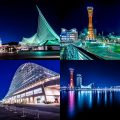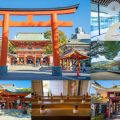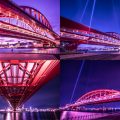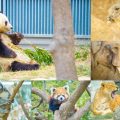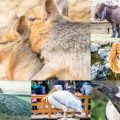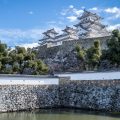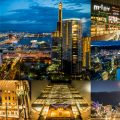[Introduction]
I traveled to Kobe in early March. In Kobe, major tourist spots such as bay area, Kitano Ijinkan-gai and Chinatown were concentrated, which was convenient for tourists. In this article, I will write about Kitano Ijinkan Gai as part of Day 2.
[Visit Places (series of articles)]
* Day 1: Fly to Kobe with Skymark
* Day 1: Chinatown and Former Foreign Settlement etc.
* Day 1: Meriken Park and Harborland
* Day 1: Meriken Park and Harborland (Light-up)
* Day 2: Kitano Ijinkan-gai [This article]
* Day 2: Ikuta Shrine, Nunobiki Herb Gardens etc.
* Day 2: Kobe Great Bridge (Light-up)
* Day 3: Kobe Oji Zoo
* Day 3: Kobe Animal Kingdom
* Day 3: Chinatown and Old Foreign Settlement (Light-up)
* Day 4: Himeji Castle
* Day 4: Akashi Kaikyo Bridge
* Day 4: Sannomiya
[Travel Date]
2018.03.08 – 11
[Main Part]
Breakfast at Kobe Motomachi Tokyu Rei Hotel
The second day of my Kobe trip started. To begin with, I will have breakfast at Kobe Motomachi Tokyu Rei Hotel where I stayed.
Breakfast was served at a guest lounge on the 2nd floor with a buffet style.
Overall, the hotel provided healthy menu and an omelet decorated with ketchup was very cute.
Kitano Ijinkan Gai (北野異人館街)
On the seconday, I will mainly go around “Kitano Ijinkan Gai (北野異人館街)”.
“Kitano Ijinkan Gai (北野異人館街)” is a historical district with Western style buildings built during Meiji and Taisho era. Among 16 historical buildings, 15 buildings were open to the public and I will visit some of them.
There was a shopping district near Kitano Ijinkan Gai, but not so many people gathered around this time, so I will return later.
Kitano Tenman Shrine (北野天満神社)
Before going around historical houses, I stopped by “Kitano Tenman Shrine (北野天満神社)”.
“Kitano Tenman Shrine (北野天満神社)” was built in 1180.
The shrine was located on a hill and visitors were able to enjoy a bird’s-eye view including “Weathercock House (風見鶏の館)” on the right.
Weathercock House (風見鶏の館)
I started to walk around “Kitano Ijinkan Gai (北野異人館街)” with “Weathercock House (風見鶏の館)”.
“Weathercock House (風見鶏の館)” was constructed as the house of German trader G.Thomas in 1909. The house is famous for the weathercock on the steeple and designated as a National Important Cultural Property.
“Weathercock House (風見鶏の館)” was designed by a German architect, so it was full of German taste.
Pictures of the Thomas family.
The house became popular when the site was used as a shooting spot for a famous TV drama in 1977.
Moegi House (萌黄の館)
Next, I visited “Moegi House (萌黄の館)”, which was located adjacent to “Weathercock House (風見鶏の館)”.
“Moegi House (萌黄の館)” was built as a residence of the Consul-General of the United States in 1903. “Moegi” means “yellow-green” and as the name suggests, external wall of the house was covered with “Moegi” color.
The interior of the house was also colored in yellow-green.
Children’s room.
While “Weathercock House (風見鶏の館)” was a heavy Baroque architecture, “Moegi House (萌黄の館)” was a light colonial style.
Uroko House and Uroko Museum (うろこの家&展望ギャラリー)
I moved from “Moegi House (萌黄の館)” and arrived at “Uroko House (うろこの家)”.
“Uroko House (うろこの家)” was originally developed as a luxurious rental house for foreigners.
As its exterior looks like fish skin, the house is called “Uroko House” (Note: “Uroko” means “fish skin” in Japanese).
It is said people who touch this boar’s nose will have good luck.
Let’s go into the house.
There were a variety of ceramics and crystals in the house.
View from the second floor.
In addition, “Uroko Museum (展望ギャラリー)” was located in the property with lots of art collections.
English House (英国館)
I left “Uroko House (うろこの家)” and moved to “Kitano Street (北野通り)”, the main street of “Kitano Ijinkan Gai (北野異人館街)”. Several historical houses were closely located along the street and I will visit two of them.
First, “English House (英国館)”.
Teddy bears welcomed me. Perhaps, they are Harrods’ teddy bears, aren’t they?
You can see how British architecture is.
One of the features was Sherlock Holmes’s room.
There was also a classic car outside.
Kobe Mysterious Consulate of Trick Art (神戸トリックアート・不思議な領事館)
Finally, I visited “Kobe Mysterious Consulate of Trick Art (神戸トリックアート・不思議な領事館)”.
“Kobe Mysterious Consulate of Trick Art (神戸トリックアート・不思議な領事館)” had different characteristics with other houses, and it showed a variety of trick art works.
Here are some photos.
Takeout at Kitano Ijinkan-Gai
As time passed around noon, the number of visitors was increasing.
“Kazamidori Honpo (風見鶏本舗)” often appears in guide books etc.
I bought a small cheese cake.
People were queuing at “Kobe Rokko Farm (神戸六甲牧場)”.
I took out a soft cream.
Then, I left “Kitano Ijinkan Gai (北野異人館街)”.
[Closing]
That’s it for the article about Kitano Ijinkan Gai as part of Day 2.
As I mentioned in the article, there are 16 historical houses in “Kitano Ijinkan Gai (北野異人館街)”. Among them, “Weathercock House (風見鶏の館)”, “Moegi House (萌黄の館)” and “Uroko House (うろこの家)” are often featured in guidebooks etc. If you are going to visit all of them, it may take a whole day and the total admission fee will become relatively expensive. So, if you have a chance to visit “Kitano Ijinkan Gai (北野異人館街)”, I would recommend you decide which houses you are going to visit in advance so that you can go around the area efficiently 🙂
In the next article, I will write about Ikuta Shrine, Nunobiki Herb Gardens etc. as part of Day 2.
[Map]
1 Kitano Tenman Shrine
2 Weathercock House
3 Moegi House
4 Uroko House and Uroko Museum
5 English House
6 Kobe Misterious Consulate of Trick Art
7 Kazamidori Honpo
8 Kobe Rokko Farm
[Related Link]
Feel KOBE | Official Travel Guide of Kobe City
Kobe Motomachi Tokyu Rei Hotel
Kitano Ijinkan-Gai
I would appreciate it if you could share my article via the following SNS buttons.



